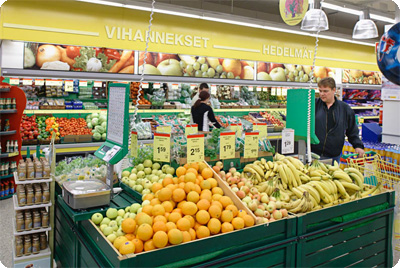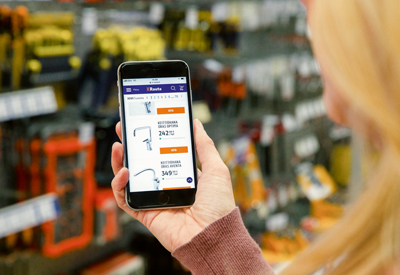
2000
A time for internationalisation
Entry into the Swedish and Baltic markets that had started in the mid-1990s gained momentum at the turn of the millennium. Major spearheads in the internationalisation process were the retailing of hardware and builders' supplies and the K-rauta format. Kesko also expanded its agricultural business to all Baltic countries, becoming a market leader in the area in a very short time.
Progress in food retailing was mainly made through two store types: hypermarkets and hard discounters. Kesko Food and the Swedish ICA combined their food trade operations in the Baltic countries. In 2006, Kesko Food sold its 50% shareholding in Rimi Baltic AB to ICA Baltic.
A network of hardware and builders' supplies stores was created in Sweden by building K-rauta outlets one by one, as K-rauta turned out to be "a successful export product", which was something new to the Swedish market. In the Baltic countries progress was made in the hardware and builders' supplies sector, both through business acquisitions and by establishing new outlets. An important acquisition in Lithuania (Senukai) made Rautakesko the market leader in the Baltic countries in 2004.
In 2005, Rautakesko expanded into Norway and Russia by acquiring Byggmakker, the best-known hardware and building materials chain in Norway, and Stroymaster, a St Petersburg DIY store chain. In July 2007, Senukai acquired the majority of voting rights in the Lithuanian UAB Romos Holdingas, which owns OMA, a Belarussian DIY operator.
Byggmakker, acquired by Kesko in 2005, is the best known building and home improvement store chain in Norway.
Russia’s first K-rauta concept store was opened in St. Petersburg in September 2006. The Stroymaster chain stores have operated under the K-rauta name since 2006.
Rautakesko is one of the fifth largest companies in the European building and home improvement market in terms of its chains’ retail sales.
The average number of personnel was 19,000 at the end of the decade.








